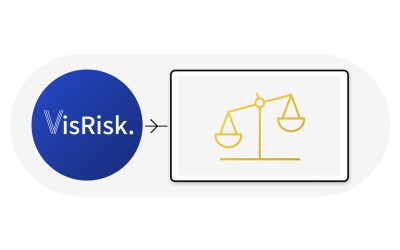The Current State of Play
Last week the FCA announced that GAP insurers had agreed to withdraw their product on the grounds of lack of Fair Value. Those that have agreed amount to 80% of the GAP market and the other 20% have agreed to no new distribution. For those insurers for whom GAP is a significant product in their stable this is going to and is having a significant impact on their business.
For many, this may be news. For those working with firms in the GAP market it is not. There has been a lot of work since at least Q3 2023 helping firms in their interaction with the FCA. Why? Because it is not the case that GAP as a product is fundamentally flawed. Senior figures in the FCA acknowledge that GAP as a product has its place in the market. So, it is not the product.
What is it then? Quite simply, it is the value which customers receive. Historically, the product has had a low rate of claims and losses and a very high commission rate, sometimes as high as 70% or more. Furthermore, losses under GAP cover have been at an absolute nadir because second-hand car prices have been so high.
Insurers in the GAP market were being squeezed, and squeezed hard. The FCA wanted to see greater value driven mainly by lower commission rates, but car dealerships had relied for many years on the income they receive from the unacceptably high commissions as a critical part of their business model. To reduce these significantly would have had, in many cases a critical, impact on their income and sustainability. Dealerships therefore refused to drop their commissions materially and any insurer who set lower commission levels lost distribution to insurers prepared to maintain the high commissions. Market forces at work. The FCA recognised that more drastic action was required and they put further pressure on insurers.
In response, insurers sought to offer a varied but significant range of solutions to the FCA to seek to ensure value was being provided rather than withdrawing their product. These included as much commission reduction as they could achieve, broadening cover and even the return of premium if claims costs were below a certain level. Here they were using the ideas and model adopted in the motor insurance market during Covid lockdowns where people were unable to use their vehicle and therefore there was a significant reduction in risk exposure and losses for insurers, so premiums were adjusted by return premium discounts and other offers.
The FCA took the view that what was really required was a reset of the model utilised in the market. The only way to achieve this was, in their view to remove the product resulting in reduced income to the recalcitrant dealerships (and of course the broking market who received commission for their involvement in the distribution chain and insurers). The thought is that dealerships would feel sufficient pain to re-think whether lower commissions rather than no commission was a better place to be. We will now see how that plays out. If it does and it is assisted by second-hand car prices reducing, we should see GAP returning to the market in due course.
What can we learn from this experience?
First, insurers and brokers need to recognise that the FCA holds the upper hand and will act if the insurers and brokers are unable, when necessary and able to, to reduce distribution costs. No-one in the manufacture or distribution of GAP products has been a winner here because the market was not able to deal with this issue within itself. Competitive forces were too influential and businesses unwilling or unable to change their ways. Interestingly, the result could have been very different if the motor dealerships had been regulated as the FCA would have had more leverage to change the market and ensure value rather than have to act as drastically as it has to everyone’s disadvantage.
Second, a product may be capable of providing fair value one minute but not the next. Markets change. Here, after cost of distribution, the next most influential factor in considering value was the change in the price of used vehicles which reduced the loss costs even further than usual. The principle that firms need to recognise with this dynamic is that the value proposition can change quickly. An annual review of product value is not going to be enough if it is clear and obvious that the market has changed and fair value to the customer has been lost. Product manufacturers therefore need to have in place a framework which will assist them to recognise when such changes occur.
Third, without doubt, just because there is a market practice, benchmark or competitive level on commissions does not mean that the insured is receiving value. A manufacturer cannot point to another firm or a generality within the market and say “I am in line” and think they are safe. If the market is not providing value to insureds across a product, it will be an issue for the market.
Fourth, there is no specific level at which commissions, when accumulated, are deemed to be acceptable. Setting them at a maximum level be it 20%, 30%, 40% or 50% does not mean that an insured is receiving value. Setting a benchmark for loss costs and agreeing to refund premiums so that the premium operates on a variable basis also is no guarantee that the insured is receiving value.
Additional musings on Fair Value
The FCA have issued their regular metrics on fair value for a range of products a few times now and we have talked about those that look like they will be next for the FCA’s attention. It is not difficult to identify them. Look on the FCA’s website and view the metrics. Any product with a very low claims count and/or very low loss costs as a percentage of premium are likely to receive attention from the FCA. Where there are also high levels of complaints, a regulatory eyebrow is likely to be raised and could fall under TCF as much as Fair Value.
However, the FCA recognises that products are designed for different circumstances. One product may be high in cost but have an underlying high frequency of claims. Another may cost little and have a low level of claims but the possibility for claims to be a multiple of the premium and/or the cover could be critical to the insured. An example might be critical illness. There is no one size fits all. Having said that, the FCA are able to identify with reasonable certainty those products which have been designed in a way to mean that the product cannot result in loss costs exceeding premiums. If in those cases the only way a manufacturer can suffer a loss is through distribution costs the FCA may consider that the product does not offer an opportunity to full Fair Value. It will always be dependent on the overall circumstances.













